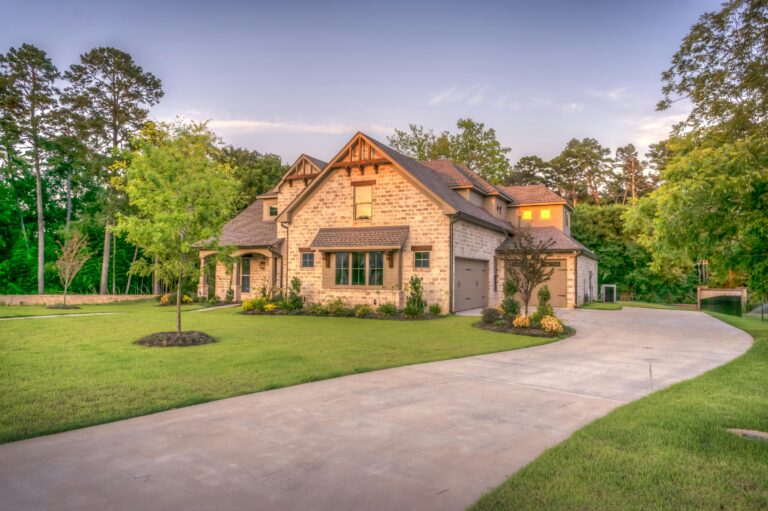
The Texas housing market continues to demonstrate remarkable resilience despite national headwinds, with certain cities experiencing explosive growth that defies broader economic trends. According to recent Zillow data analyzed by Stacker, 50 Texas cities are witnessing significant home price appreciation, revealing a complex landscape where location, affordability, and quality of life converge to create distinct winners in the real estate race.
The Luxury Leaders
At the pinnacle of Texas’s housing surge stands Westlake, a Dallas-Fort Worth suburb that has claimed the top spot with a staggering $188,561 increase in typical home values over just one year. Properties in this exclusive enclave now command a median price of $3,041,133, representing a 6.6% annual jump and an astronomical 84.6% gain over five years. This remarkable appreciation underscores the sustained demand for premium real estate in the Dallas metropolitan area, where affluent buyers continue to compete for limited inventory in the state’s most coveted neighborhoods.
The Dallas-Fort Worth corridor dominates the luxury market’s upper echelons. Highland Park secured second place with a $120,017 annual increase, pushing typical home values to $2,743,647, a five-year appreciation of nearly 91%. Westover Hills rounds out the top three with a $112,606 annual gain and home values exceeding $2.4 million. University Park, another Dallas-area jewel, claimed fourth position with a $96,669 increase, bringing its typical home value to approximately $2.3 million.
These stratospheric price points reflect more than simple supply and demand dynamics. They represent the consolidation of wealth in established, prestigious communities with exceptional schools, mature tree canopies, and proximity to Dallas’s cultural and business centers. The five-year appreciation rates, ranging from 76% to 91% in these top-tier markets, demonstrate that luxury real estate in North Texas has become not just a lifestyle choice but a formidable investment vehicle.
The Emerging Hotspots
Beyond the luxury enclaves, several smaller Texas communities are experiencing growth that, while more modest in dollar terms, represents significant percentage gains and reveals shifting preferences among homebuyers. Doss, a tiny community in the Fredericksburg metro area, saw typical home values surge by $68,480 (11.3%) in just one year, bringing properties to a median of $674,702. This dramatic appreciation reflects the growing desirability of Texas Hill Country, where buyers seek scenic beauty, wine country charm, and respite from urban congestion.
Van Vleck, a small Bay City metro community, experienced a remarkable 13.7% annual increase, $28,175, despite far more modest absolute home values around $234,397. Similarly, Beckville saw a 13.9% jump, while Van Horn’s prices soared 14.8%. These outsized percentage gains in more affordable markets suggest that buyers priced out of major metros are discovering value in smaller communities, driving appreciation rates that far exceed those of larger cities.
The geographic diversity of these emerging hotspots is striking. From border communities like El Indio (10.1% annual growth) to Central Texas towns like Franklin and North Zulch, to East Texas locations like Douglass, the growth pattern suggests that Texas’s housing boom has transcended regional boundaries. These communities often offer lower cost of living, outdoor recreation opportunities, and the remote work flexibility that has reshaped American housing preferences since the pandemic.
Houston and San Antonio: Steady Metropolitan Growth
While Dallas-Fort Worth dominates the luxury sector, Houston and San Antonio demonstrate more balanced, sustainable growth patterns. In the Houston metropolitan area, Bellaire stands out with a $48,985 annual increase, bringing typical values to $1,127,798. Beach City and Shenandoah also posted solid gains, with annual increases exceeding $18,000 and $18,800 respectively, reflecting the continued appeal of Houston’s diverse suburban communities.
San Antonio’s growth story centers on communities like Hill Country Village, where home values increased by $48,600 annually to reach $1,230,658. Shavano Park, another upscale San Antonio suburb, saw values rise to $938,314 with a modest but steady 1.7% annual gain. These figures suggest that San Antonio’s housing market is maturing gracefully, offering appreciation without the volatility that sometimes accompanies rapid growth.
The Houston and San Antonio markets benefit from economic diversification, with energy, healthcare, technology, and military installations providing employment stability. This economic foundation, combined with more affordable housing compared to coastal markets, continues to attract domestic migrants seeking better value and quality of life.
The Broader Context
The Texas housing market’s sustained growth occurs against a challenging national backdrop. Nationwide, the typical home value stood at $364,891 in September 2025, essentially flat year-over-year. Increasing mortgage rates have slowed growth across much of the country, with some markets experiencing price declines. Yet Texas’s population growth, business-friendly climate, and relative affordability continue to drive demand that outpaces supply in many communities.
The five-year appreciation data reveals the pandemic’s lasting impact on housing preferences. Many of the fastest-growing communities have seen 40-90% value increases since 2020, far exceeding the typical historical appreciation rates of 3-4% annually. This acceleration reflects multiple forces: urban-to-suburban migration, remote work adoption, historically low interest rates (now reversed), and demographic shifts as millennials reach prime homebuying age.
Interestingly, not all markets are participating equally. Some Texas cities have seen prices stabilize or even decline slightly, particularly in energy-dependent regions like Midland, where the typical home value increased just 4.2% annually despite broader state trends. This disparity underscores that real estate remains fundamentally local, with each community’s unique economic base, amenities, and constraints shaping its trajectory.
What This Means for Buyers and Investors
For prospective homebuyers, the data presents both opportunities and challenges. Entry-level buyers may find better value in emerging communities like Van Vleck, Beckville, or Dumas, where strong percentage gains suggest growing desirability but absolute prices remain manageable. However, rapid appreciation in these markets may close the affordability window faster than many anticipate.
Investors face a more complex calculus. The luxury Dallas-Fort Worth suburbs have demonstrated remarkable consistency, with five-year gains suggesting these markets can weather economic uncertainty. However, valuations approaching $3 million limit the buyer pool and increase sensitivity to economic downturns. Mid-market communities in growing metros like Houston and San Antonio may offer more balanced risk-reward profiles, with steady appreciation supported by diverse economies and job growth.
The wild cards remain the small, rapidly appreciating communities. While double-digit annual gains attract attention, these markets often lack the economic depth and population base to sustain such growth long-term. Buyers and investors should carefully evaluate local employment, infrastructure development, and demographic trends before committing to these higher-risk markets.

Looking Ahead
Texas’s housing market stands at an interesting juncture. The combination of sustained population growth, limited housing inventory, and economic dynamism continues to support price appreciation across diverse communities. However, elevated mortgage rates, affordability concerns, and the possibility of economic headwinds create uncertainty about future trajectories.
What seems clear is that Texas will remain a battleground for housing demand, with buyers seeking value, lifestyle, and opportunity driving continued interest in the Lone Star State. Whether that translates to continued double-digit gains in emerging markets or more modest, sustainable appreciation in established communities remains to be seen. For now, the data reveals a state where housing dreams remain attainable for many, even as prices climb steadily upward across dozens of communities from the Piney Woods to the Hill Country to the Rio Grande Valley.
The cities experiencing the fastest growth today, from wealthy Dallas suburbs to small Hill Country towns, are writing the next chapter of Texas’s development story, one home sale at a time.





